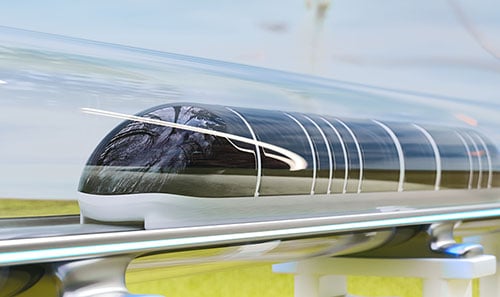Guide to Selecting and Sizing Industrial Caliper Brakes
Complete Braking Solutions for Industrial Applications
Industrial brake calipers are critical components for controlling high-torque, high-energy systems in manufacturing, packaging, and material handling equipment. This comprehensive guide helps engineers select, size, and integrate the right brake caliper for their specific application.
Key Benefits of Brake Calipers from W.C. Branham:
- Industry-leading 1-week delivery times
- Complete system compatibility with WCB gearboxes, actuators, and intensifiers
- 24/7 online ordering with 3D configurator for instant pricing and CAD files
- Same-day application engineering support
Menu
Quick Selection Guide
| Application type | Recommended brake | Key benefits | System integration |
|---|---|---|---|
| Emergency stop/Fail-safe | Spring-applied | Automatic engagement on power loss | Compatible with safety systems |
| High-force materials | Hydraulic | Maximum torque capacity | Pairs with intensifiers |
| Standard manufacturing | Pneumatic | Cost-effective with shop air | Matches actuator pressure specs |
| Washdown environments | Stainless steel* | Corrosion resistance | Food-grade system compatibility |
| Manual applications | Mechanical | No external power required | Integrates with manual gearboxes |
*Note: Standard friction pads are not ideal for food grade environments, and plastic friction pads wear down quickly, so be careful when choosing brake pads to pair with your stainless steel brakes.
Need help choosing? Use our 3D Configurator to build and price your complete braking system in minutes.
Take This Guide With You
Reference brake specifications, sizing calculations, and selection criteria offline
during equipment reviews and vendor meetings.
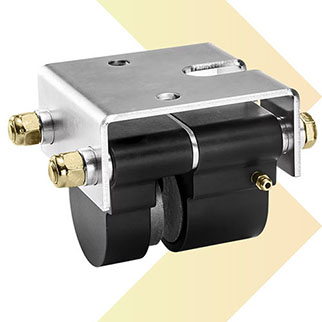
How to Select Your Industrial Brake System
Caliper disc brakes can slow, hold, and stop very heavy and/or fast-moving objects quickly. They are great when high torque, high energy stopping, and/or tensioning is required.
Available Power Systems:
- Pneumatic brakes (powered by compressed air)
- Hydraulic brakes (powered by compressed fluid)
- Spring-applied brakes (fail-safe operation)
- Mechanical brakes (manual operation)
All brake types sold by W.C. Branham are engineered for seamless integration with our complete line of gearboxes, actuators, and intensifiers, reducing engineering time and ensuring system compatibility.
Major Selection Criteria
Engineers need to consider three primary factors when selecting brake calipers: power source compatibility, application requirements, and environmental constraints. Here's how to systematically narrow your options.
Step 1: Determine Your Power Source Strategy
Your facility's existing infrastructure drives the initial decision. If you have reliable 70-120 psi shop air available, pneumatic brakes offer the most cost-effective solution and integrate seamlessly with other pneumatic components.
The real advantage emerges when you're specifying multiple pneumatic devices—shared pressure systems simplify installation, reduce maintenance complexity, and provide unified troubleshooting.
For applications requiring maximum stopping force—such as heavy material handling equipment or high-speed packaging machinery—hydraulic systems provide superior torque capacity. Modern installations can eliminate traditional hydraulic power units by using air-to-oil intensifiers that convert existing shop air to hydraulic pressure, maintaining familiar maintenance procedures while achieving hydraulic performance.
Step 2: Evaluate Safety and Fail-Safe Requirements
Any application involving suspended loads, emergency stops, or safety-critical holding requires spring-applied brakes. These systems use internal springs to engage automatically when power fails, making them essential for elevator systems, overhead cranes, and robotics applications where uncontrolled motion poses safety risks.
Spring-applied brakes are available in both pneumatic and hydraulic configurations, allowing integration with existing power systems while maintaining fail-safe operation.
Step 3: Consider Application Duty Cycle
Dynamic stopping applications generate significantly more heat than static holding or tensioning applications. If you're stopping rotating masses frequently, calculate both the energy generated per stop and the heat dissipation capability of your disc surface area. Continuous tensioning applications require careful pad wear analysis and may benefit from larger disc diameters to distribute wear over greater surface area.
Static holding applications focus purely on torque capacity without thermal concerns, making them suitable for smaller brake configurations. Emergency stop applications combine high energy absorption with fail-safe requirements, typically necessitating spring-applied hydraulic systems with oversized discs for heat management.

Pneumatic Brakes
Pneumatic brakes operate on compressed air at 70-120 psi, with optimal performance at 85 psi shop air pressure. They generate torque values from 600 to 15,000 inch-pounds depending on caliper size and disc diameter, making them suitable for most standard industrial applications.
Key Advantages:
- Lower initial cost when shop air is available
- Simple installation and maintenance
- Compatible with Branham pneumatic actuators and systems
- Standard delivery: [X] days
Best Applications: Standard manufacturing equipment, packaging lines, conveyor systems
System Integration: Pneumatic brakes can share pressure systems with ULTRIQ actuators and other pneumatic components for simplified system design.

Hydraulic Brakes
Hydraulic brakes use compressed fluid—typically hydraulic oil or DOT 3/4 brake fluid—to generate forces 10-20 times higher than pneumatic systems at equivalent sizes. They're essential for high-torque applications requiring maximum stopping power, such as heavy material handling equipment, mining machinery, and large packaging systems.
Key Advantages:
- Maximum braking force capability
- Precise control and modulation
- Excellent heat dissipation
- Compatible with WCB intensifier systems
Best Applications: Heavy material handling, mining equipment, high-speed machinery, large packaging systems
System Integration: Pair with Branham air-to-oil intensifiers to convert shop air to hydraulic pressure, eliminating the need for separate hydraulic systems.
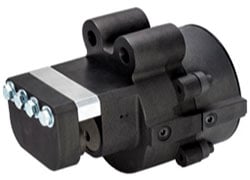
Spring Applied Brakes
Spring-applied brakes provide fail-safe operation by using internal springs to engage the brake when power is lost. Available in both pneumatic and hydraulic configurations, they're essential for any application where brake failure could result in safety hazards or equipment damage.
Key Advantages:
- Automatic engagement on power loss
- Emergency stop capability
- Static holding without continuous power
- Operates on standard 85 psi shop air (pneumatic models)
Best Applications: Emergency stops, suspended loads, elevator systems, robotics, rotary indexing
System Integration: Designed to integrate with Branham safety systems and emergency stop circuits across multiple machine functions.
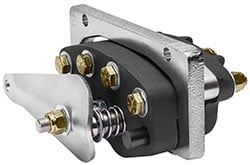
Mechanical Brakes
Mechanical brakes operate via manual lever action without external power sources, providing reliable braking force for applications where simplicity and independence from power systems are priorities.
Key Advantages:
- No external power required
- Simple, reliable operation
- Lower maintenance requirements
- Immediate availability
Best Applications: Manual carts, backup systems, remote locations, maintenance applications
Mounting Configurations: Fix-Mount vs. Floating Design
Proper brake selection and integration depends on your knowledge of mounting configurations. The choice between fix-mounted and floating designs affects performance, maintenance access, and compatibility with disc variations.
Fix-mounted brakes attach rigidly to equipment frames with pistons on both sides of the disc. When disengaged, both friction pads retract from the disc surface, providing complete clearance. This positive retraction prevents dragging and eliminates residual friction losses, making fix-mounted brakes ideal for applications requiring precise motion control or minimal parasitic drag.
The double-acting design provides balanced clamping forces and accommodates higher pressures effectively. Installation requires precise alignment between the caliper and disc, but the rigid mounting provides consistent performance and simplified troubleshooting. Fix-mounted designs work best with precision-machined discs that maintain tight runout tolerances.
Floating brakes mount on sliding pins that allow the caliper housing to move laterally when engaged. One side features a reaction pad that contacts the disc directly, while the opposite side has a piston that pushes the caliper housing across the disc surface. This design automatically centers the caliper on the disc and accommodates disc runout, thermal expansion, and mounting tolerances.
Floating systems are more forgiving of installation variations and work effectively with fabricated discs that may have greater runout than precision-machined components. They're particularly valuable in applications with large temperature variations where thermal expansion affects disc position. The self-centering action also extends pad life by ensuring even wear patterns.
Branham integration advantage: Both mounting styles designed with standardized interfaces for our gearboxes and mounting systems, simplifying installation and maintenance.
Linear Braking on Rails
Brake calipers excel at stopping linear motion on rails, offering space-saving alternatives to traditional linear braking systems. Branham’s linear brake solutions work on any flat surface with parallel faces, straight or slightly curved.
This versatility makes them valuable for manufacturing carts on rail systems, overhead gantry systems, elevator emergency brakes, and linear indexing equipment in medical device and pharmaceutical manufacturing.
Linear applications benefit from the high clamping forces available with hydraulic systems, especially when stopping heavy loads or providing static holding on inclined rails. The brake caliper's compact profile often fits where traditional linear brake systems cannot, making them particularly valuable in space-constrained applications.
Tensioning and Web Control
Continuous slip applications use brake calipers to maintain consistent tension in web processing, cable management, and material handling systems. Unlike stopping applications, tensioning requires careful heat management and pad material selection to handle continuous friction without excessive wear or temperature buildup.
Packaging and Material Handling
Modern packaging equipment increasingly integrates brake calipers into carton forming systems, palletizing equipment, and wrapping machines. The compact profile and high force capability make them ideal for applications where space constraints eliminate traditional stopping mechanisms. Integration with existing pneumatic systems simplifies control and reduces system complexity.
Stainless Steel Brakes
Stainless steel is unsurpassed in durability. It is excellent in harsh environments or where heavy industrial cleaning is important. The FDA and USDA require stainless steel in most food processing.
Both aluminum and stainless steel brakes are light, but stainless has some distinct advantages. It’s resistant to corrosion in chemical and marine environments, it can withstand high-pressure washdowns without degradation, it’s resistant to extreme temperatures, and it doesn’t require coating (which eliminates paint failure issues).
Brake Pads and Friction Materials
Friction material selection directly affects brake performance, wear rates, and heat capacity. Branham offers brake pads with friction coefficients ranging from .21 up to .55.
Material Selection Criteria:
- Coefficient of friction: Higher coefficients for static holding, lower for tensioning
- Wear rate: Optimized for application duty cycle
- Energy capacity: Matched to heat generation requirements
Available Materials:
- Organic: Lowest energy capacity, smooth operation, cost-effective
- Semi-metallic: Balanced performance and energy capacity
- Sintered metal: Highest energy capacity for severe duty applications
Operating Temperature Limits: Maximum disc temperature should not exceed 300°F for longest service life. Heat dissipation is directly proportional to exposed disc surface area, making larger discs beneficial for high-energy applications. Standard disc thickness of 5/32" or 1/4" provides optimal balance between heat capacity and weight, though thicker discs may be specified for extreme applications.
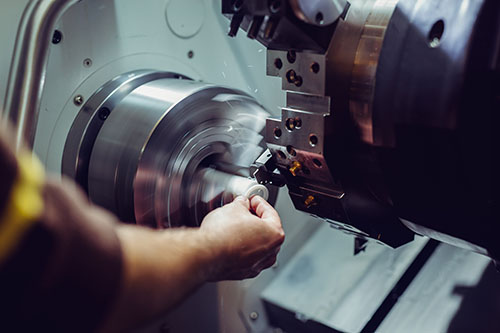
Technical Specifications & Sizing
Proper brake sizing requires systematic analysis of application requirements, environmental constraints, and integration factors. This process ensures optimal performance while avoiding over-specification.
Application Types
Dynamic stopping applications require torque calculations based on rotating mass, radius of gyration, operating RPM, and required stopping time. The fundamental equation combines kinetic energy absorption with heat dissipation capability to determine minimum brake and disc specifications.
Static holding applications focus on required holding torque without thermal considerations. Select brake and disc combinations capable of maintaining load without continuous power input, typically with 25-50% safety margin for load variations.
Tensioning applications need continuous duty analysis including heat generation per unit time, disc heat dissipation capacity, and pad wear rates. These applications often benefit from larger discs to distribute heat over greater surface area.
Sizing Calculations
Start with required torque or braking force for your specific application. Determine available space for disc diameter—larger discs produce higher torque with the same clamping force. Evaluate available pressure from your power source, as higher pressure enables greater torque from smaller brake calipers.
System Integration Considerations
Consider how brake selection affects overall system design. If you're specifying Branham gearboxes, actuators, or other components, choose brake configurations that complement the system architecture. Shared pressure systems, common mounting interfaces, and unified maintenance procedures provide long-term operational advantages.
Next Steps: Complete System Solutions
Industrial brake calipers integrate most effectively when selected as part of a comprehensive drive system rather than isolated components. Branham's complete component approach simplifies procurement, reduces vendor management complexity, and ensures perfect compatibility between gearboxes, actuators, brakes, and intensifiers.
With over 1,300 standard products available and comprehensive custom engineering capabilities, W.C. Branham delivers the brake solution you need with the service excellence you deserve.


